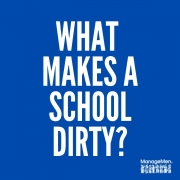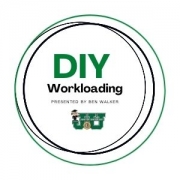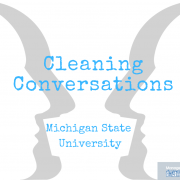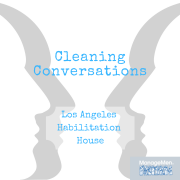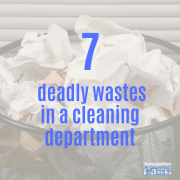What Makes a School Dirty?
Should we care about dirty schools? Well, the short answer is yes, but probably not for the reasons you think. While visible dirt may keep students and staff from feeling positive about their environment (known as topophilia), a growing body of evidence has found that dirty schools may pose larger challenges— resulting in things like lower test scores and increased absenteeism.
This is an issue in normal times, but an even greater problem coming out of a pandemic. With a considerable number of children having lost valuable learning time, schools need every edge they can get to keep students engaged and performing.

There are almost 130,000 K-12 schools in the U.S. and little oversight over how they are cleaned. In many schools, public and private, you’ll find vacuum cleaners that belch out dust, custodial closets that showcase a host of expired and outdated products, and custodians that wear a wide variety of hats—they do everything from keeping external walkways clean to vacuuming classrooms to stewarding after school events.
As any parent, aunt, uncle or teacher knows, kids can be dirty. Really dirty. And within our public schools alone, there are more 50.6 million students, based on federal projections for the fall of 2021.
In the effort to provide students with a safe and clean learning environment, what other factors should educators identify for that might contribute to a dirty school?
- Poor maintenance of cleaning equipment. You have to clean your cleaning equipment. Replacing vacuum filters, regularly laundering microfiber or other cleaning cloths, cleaning out mop buckets are all preventative maintenance strategies that help make for cleaner schools and longer lasting equipment.
- Cross contamination between areas. Most schools have kitchens, restrooms and classrooms. When the systems aren’t in place to prevent movement of cleaning tools and equipment between areas, the same cleaning cloth might be used to clean a restroom sink, kitchen counter and/or a desk.
- Underestimating cleaning frequencies. In a recent study that analyzed microbes on desks in three Connecticut schools, researchers took samples and examined how cleaning impacted surface microbial concentrations. Study authors concluded, “Current school surface cleaning protocols and cycles may be ineffective at reducing student exposure to fungal allergens and microbes of human origin.”
- Limited training for custodial workers. In many school custodial, training encompasses a few days (or hours) of following someone around to learn the job. Very few cleaning operations have a comprehensive training program in place that not only teaches employees HOW to clean, but WHY they clean. Training should not only provide workers with the overall understanding of why their jobs are critical and how cleaning impacts the health of people in the buildings they clean, but also protocols for how and when to perform specific cleaning tasks.
- The absence of cleaning systems. Cleaning isn’t about pushing dirt around, it’s about removing dirt and unwanted substances from the environment. And without the proper cleaning systems in place (e.g. moving from the top of the room to the bottom, disinfecting without cleaning), there’s a good chance custodians in your buildings are just moving dirt from one place to the next.
The pandemic has changed the way so many look at cleaning, and this is increasingly true in our nation’s school systems. How we clean and maintain our schools has a direct impact on our students. As organizations look to utilize federal funding through the American Rescue Plan Act of 2021 and other funding resources designated to help schools successfully reopen, it’s a great opportunity to examine the equipment, processes and training used by custodial workers.
Successfully managing a school environment is a necessary educational investment. But it’s one that pays off.
Learn more about how you can work to clean up your school in this post: Why Dirty Schools are a Big Problem—and What We Can Do to Clean Them Up https://managemen.com/why-dirty-schools-are-a-big-problem-and-what-we-can-do-to-clean-them-up/

